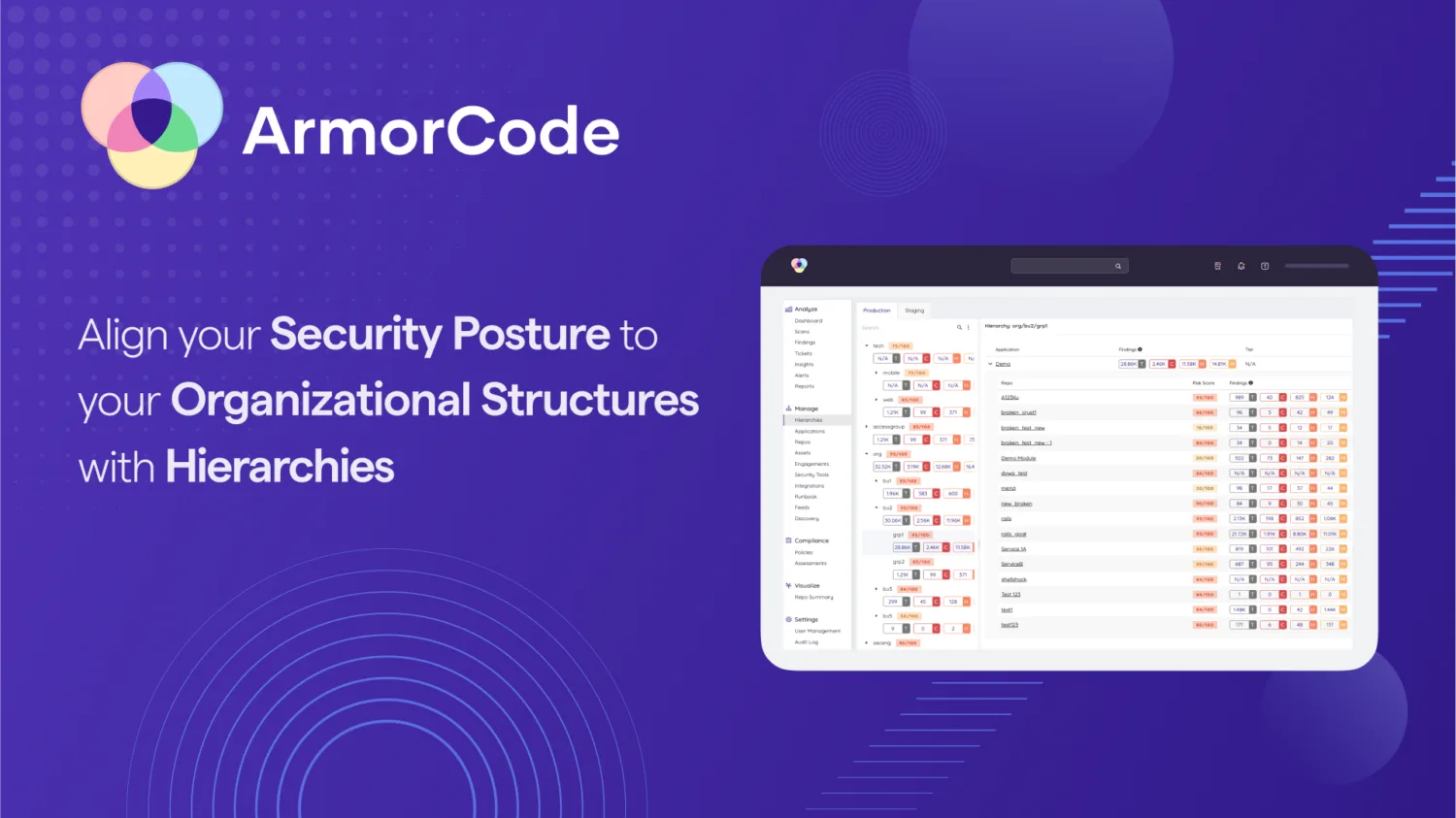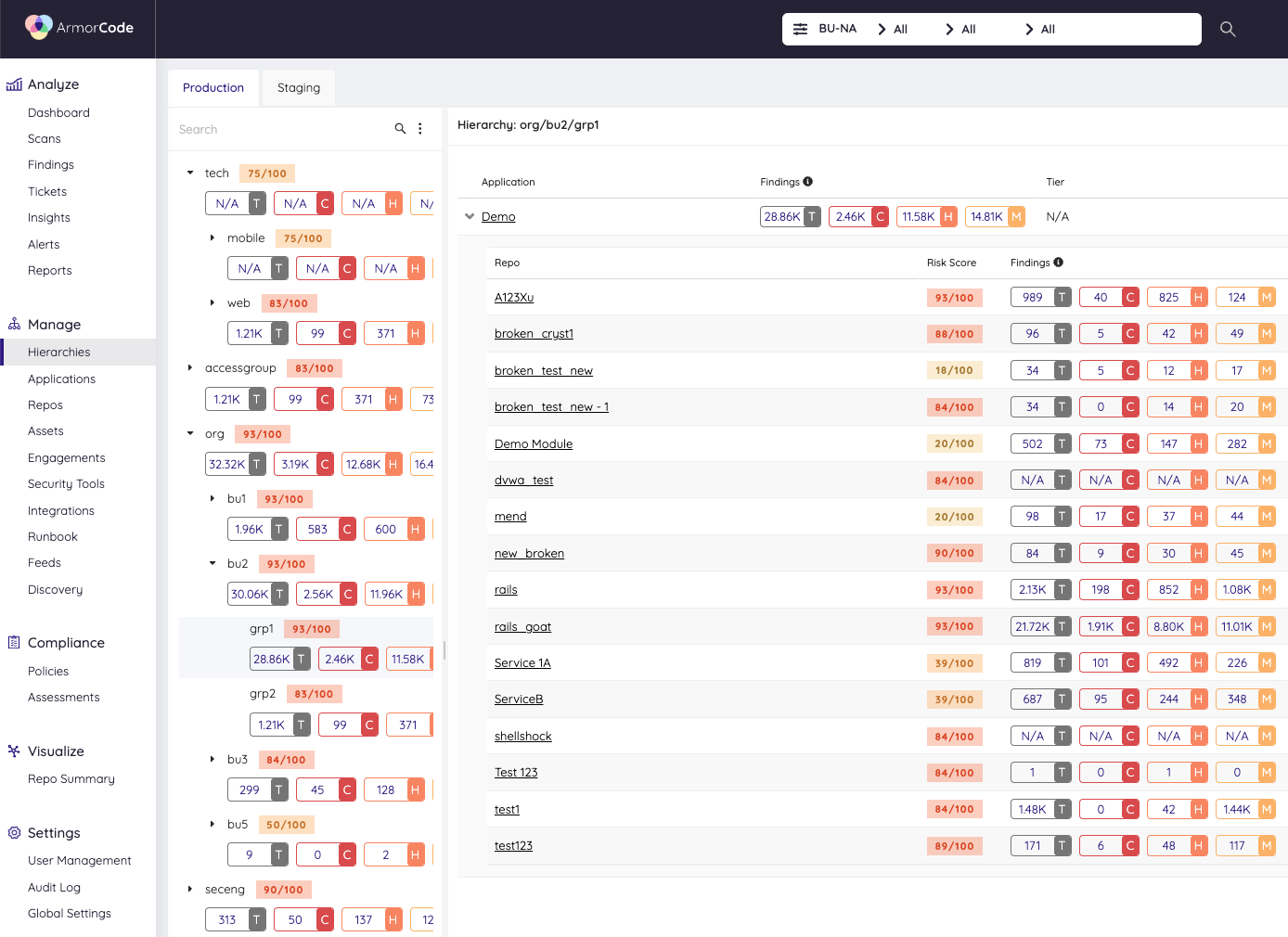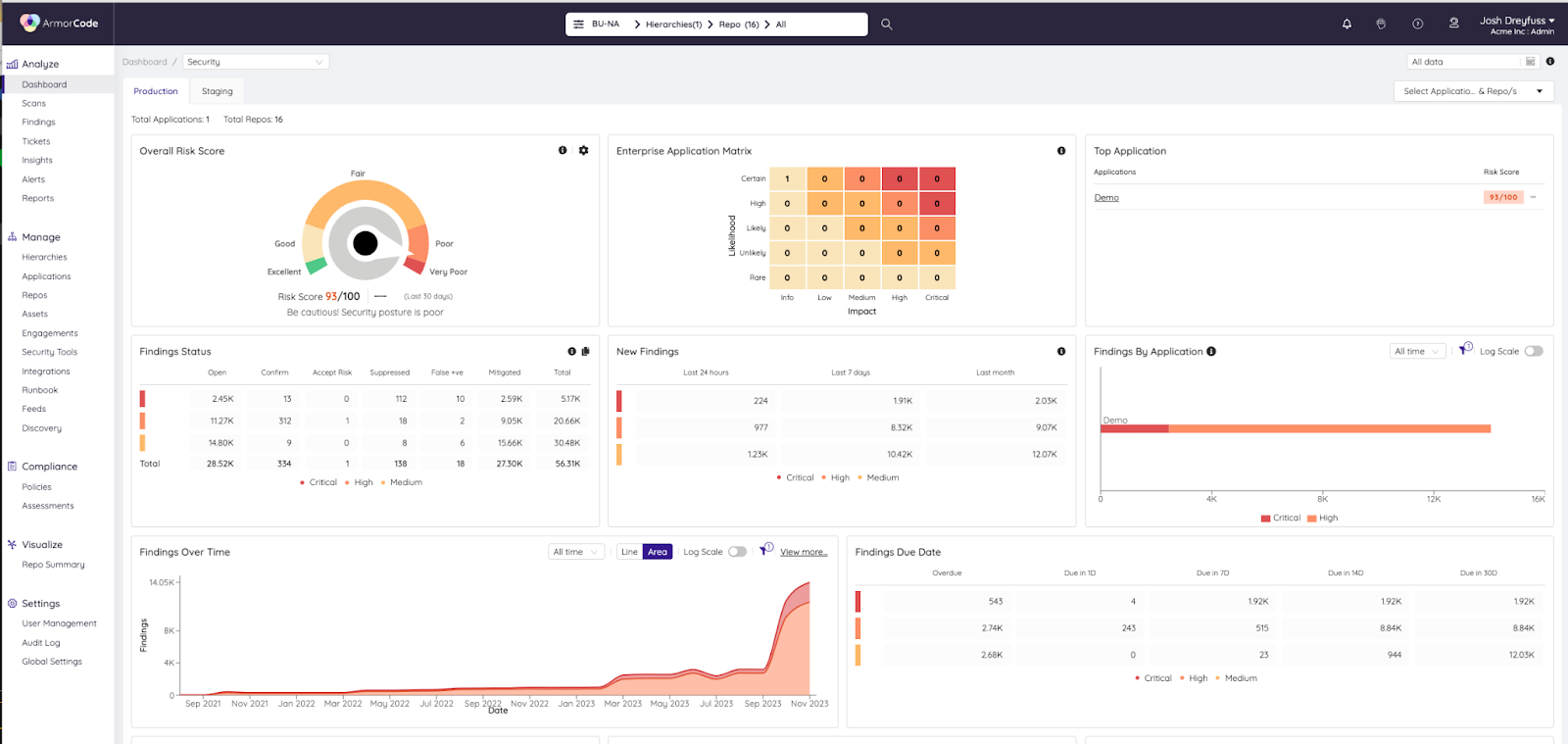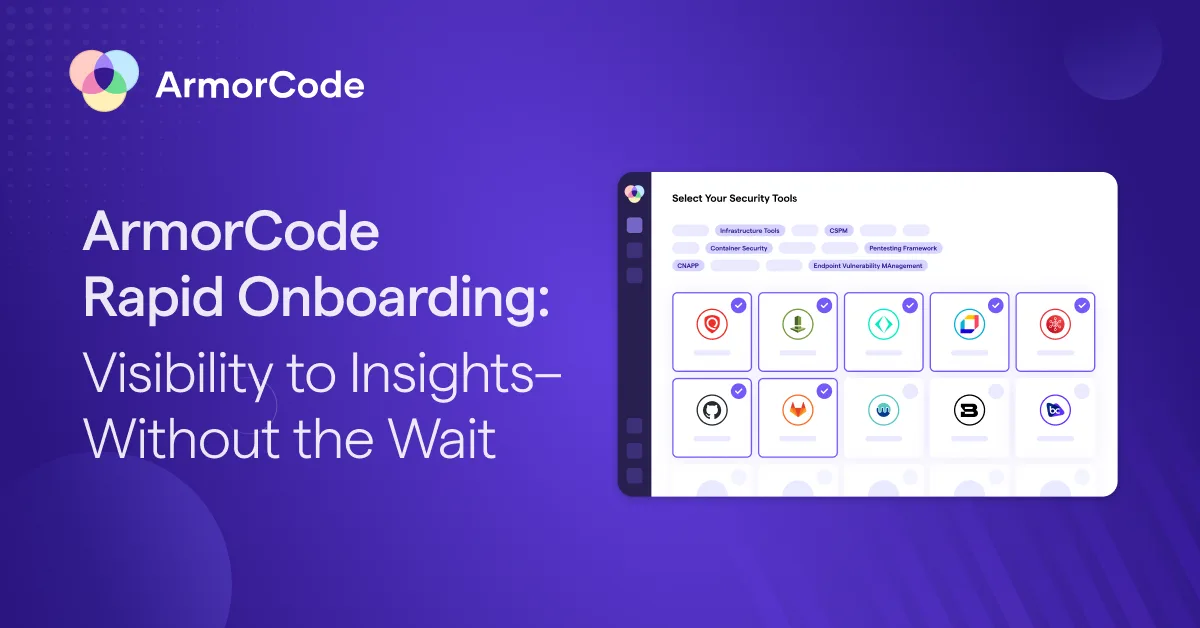Align your Security Posture & Organizational Structures with Hierarchies

When it comes to understanding and reporting on the state of software risk for your business, you need to be able to align your view of risk to core structures that the business cares about. Leadership may not care about which assets have critical vulnerabilities, they want to know about risk by business unit or geography. Security teams are tasked with understanding and reporting on security posture as it rolls up into these different organizational structures, but aligning security data to real-life organizational structures can be complex, rigid, and difficult to determine.
Security teams are stuck translating findings from their scanning tools into many different structural lenses for reporting – business units and product lines, technological structures like endpoint devices or cloud providers, asset ownership structures, geographical structures, and more – many of which they have to create representations of manually. To make matters more difficult, these reporting structures change frequently. Reorgs happen, new cloud environments are spun up or down, ownership of a particular product changes, new offices open up, and so on. Security teams are unable to visualize and report on these multiple, complex, and frequently overlapping structures without a lot of manual effort if they’re able to do it at all.
Introducing Hierarchies in ArmorCode
To help security teams better identify, understand, and report on their risk across organizational, technological, and other structures that matter to their business, ArmorCode is introducing Hierarchies. Hierarchies deliver a simple way to manage and represent the real hierarchies that are important to your business in ArmorCode. With Hierarchies, you can now align ArmorCode to the different structures that matter to your business, from organizational to technological to ownership, no matter how simple or complex that hierarchy is. Built upon the tagging power of ArmorCode, Hierarchies makes it easy to view and report on data through multiple structural lenses flexibly and accurately.
With Hierarchies in ArmorCode, teams can now represent complex hierarchies within the platform that span across applications and infrastructure, including N-level hierarchies, multiple hierarchies that share a Product or Subproduct, and parallel hierarchies. Let’s take a look at the power of Hierarchies and how they help you get more out of ArmorCode.
See your risk across applications & infrastructure assets
With Hierarchies in ArmorCode, teams can seamlessly build and flexibly re-organize multiple hierarchies. This gives organizations a real-time, dynamic view into their security posture and debt across the reporting structures that reflect their business. For the first time, teams can understand what work different teams are responsible for and the risk across product lines, geographies, and other lenses that matter to their business, all in real-time and driven by data from their scanning tools without requiring data aggregation workflows.

Explore your software risk from 10,000 feet or drill down N-levels deep
To better prioritize and efficiently remediate, teams can navigate their Hierarchies to pinpoint areas of concern and jump into details to trigger triaging and remediation workflows. You can drill into a Hierarchy directly or filter for that Hierarchy at the global level. When selecting a Hierarchy at the global level, all of ArmorCode, from dashboards to Findings, filters to that Hierarchy, enabling teams to leverage the full power of ArmorCode at any level of specificity within a Hierarchy. For example, suppose a security team wants to review risk within an organizational reporting hierarchy. In that case, they can start at the top organizational level and drill down as many levels as necessary to a specific individual within a development team.

Make reporting that aligns with your organization’s structures a breeze
Hierarchies allow users to generate real-time, dynamic reports on the security posture of multiple parallel or interdependent organizational structures. No matter what lens of data leadership needs to see, security teams can quickly and accurately generate reports on their security posture. Teams can filter ArmorCode Platform down to a specific organizational structure to report on Findings, SLA adherence, risk, and more.
ArmorCode Hierarchies align security posture management with your business structures
Hierarchies give security teams a fully flexible and easy-to-manage way to represent their real business reporting structures in ArmorCode. Create N-level hierarchies, parallel hierarchies, or overlapping hierarchies across applications and infrastructure to align with the different important lenses of your business structures. Security teams can experience better-aligned visibility into their software risk, save time on reporting, and prioritize tasks more effectively. Schedule a demo to learn more about ArmorCode and see Hierarchies in action.



